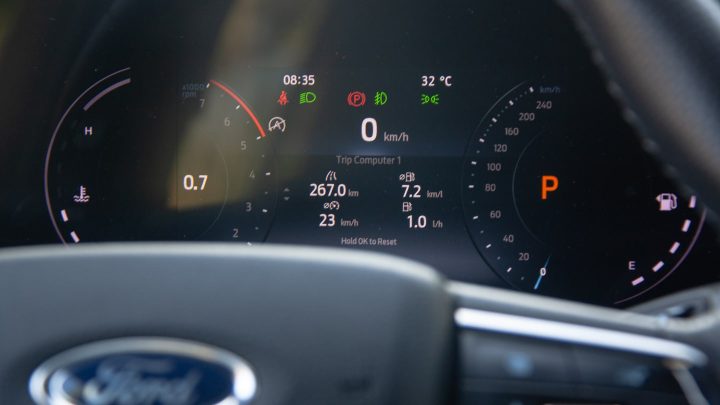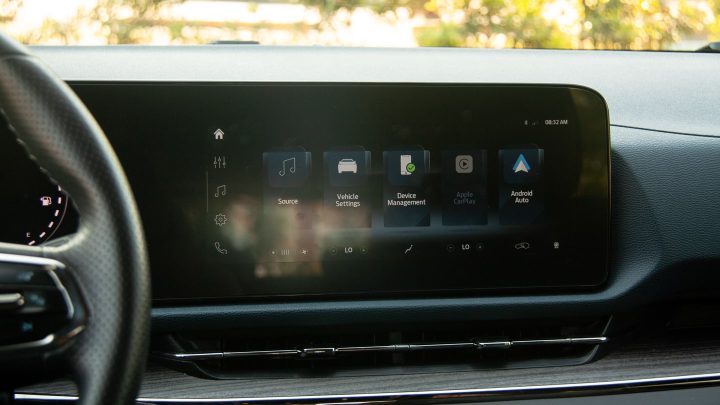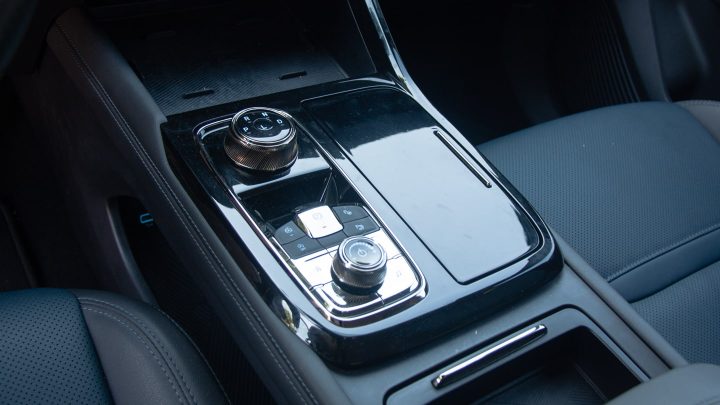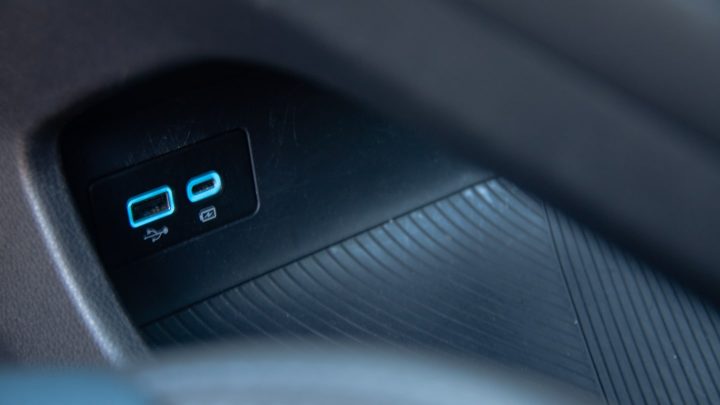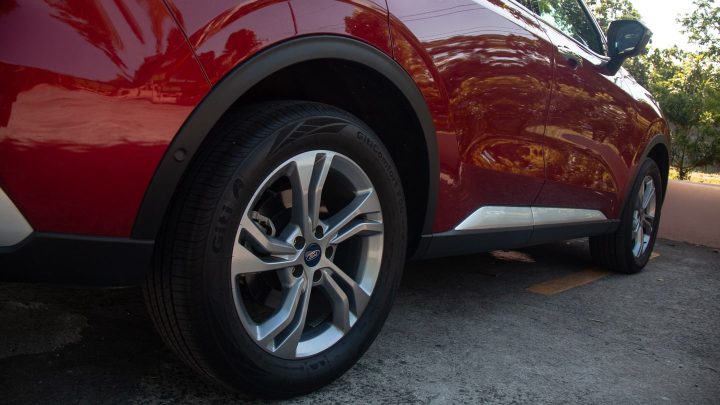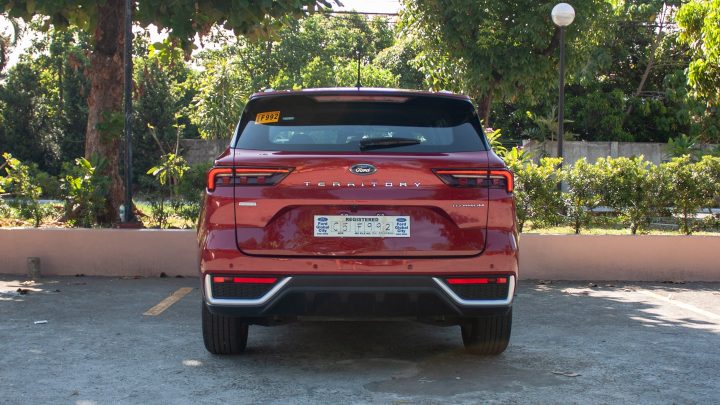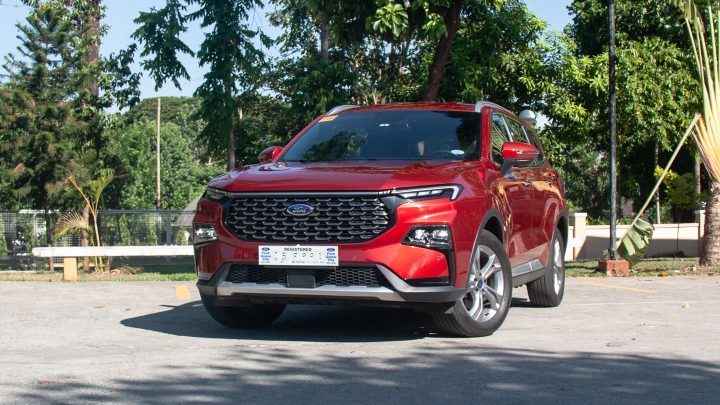
The release of the new Ford Territory had a lot of people, especially the fans of its first release in the PH, pretty excited. We can’t deny that some would naysay as to its prowess and value, but we’re here to talk about what the new “generation” brings to the table, and how it compares to the rest of its competitors in the country. Is it the same as its older sibling, or does it come with better features and value? Let’s find out.
Firing away at the 2024 Ford Territory Titanium
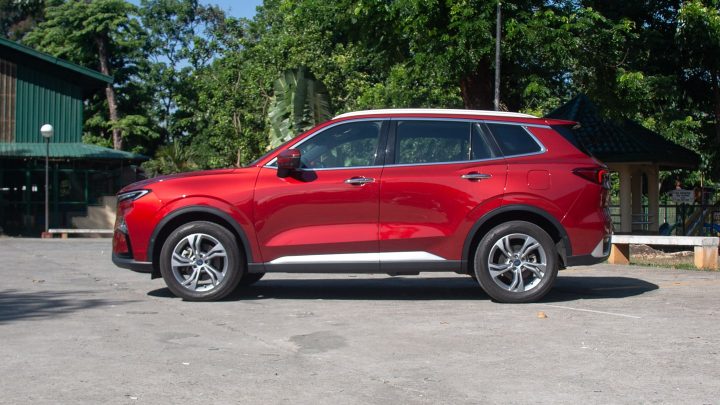
Let’s first deal with the obvious: the Ford Territory Titanium is big. And it is so much bigger than its previous iteration. This new generation has done away with the bulbous looks and has gone the boxy route. On the front, it uses a sleek pair of DRLs on the top corners – they really look like headlights – and they flank a rather massive geometric-pattern grill finished in black and chrome. At the grill’s lower corners sit the actual headlight assemblies that also house the foglights. Both are LED, by the way.
If anything’s been retained from the looks of the older front end, it has to be the black chin and the faux skid plate with a brushed metal finish. What I really liked about the front is what I’d describe as a “hooked” design on both DRLs and headlights. As the grill frames the overall look, the downward lines on either side make it look much sleeker. The Territory is definitely not boring to look at, in my opinion.
On to the the side, the most prominent feature is the lack of overly-bulging fenders. As I mentioned, this one’s more boxy compared to the old model and it makes the Territory look more mature but no less sporty. That being mentioned, we still get blacked-out fender flares, and a set of split-spoke alloy wheels, and we’ll find that the silver-black combination of the front trim pieces also makes their way to the side. The roof is also much flatter, and I’m glad to say that the greenhouse and beltline, though small and high, respectively, are still in proportion.
As for the rear of the Territory, it again has the same accent piece color scheme and uses it to frame the lower corners of either side of the rear bumper. This look, as well as the rear diffuser, are the features that I must admit I least like. I do not find them unattractive, but I just think they could have gone a flatter route with the rear skirt, and maybe minimized the “shiny” bits. Overall, though, the wide tailgate, the slim taillamps, and the wing all make for a very strong look for the back of the Territory. Overall, not bad at all.
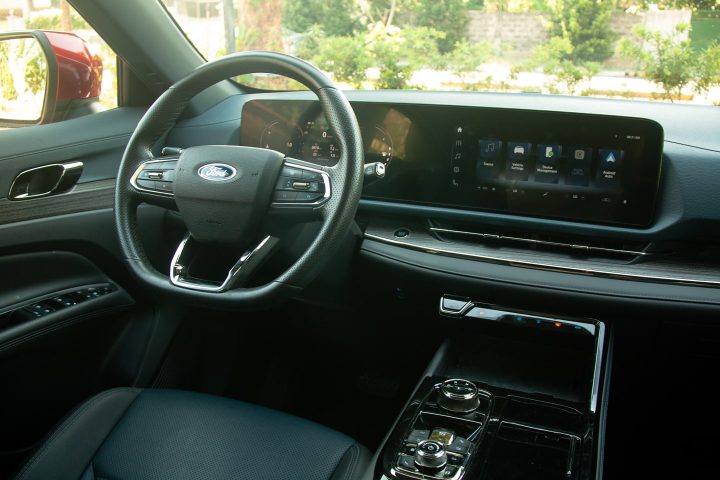
The inside of the 2024 Territory is also leaps and bounds different from the older generation.
When you get in the driver’s seat, you’ll see a new steering wheel with the same audio, gauge cluster controls, and cruise control toggles. The gauge cluster being mentioned, you now get a massive screen that stretches in front of you to the center of the dashboard. The 7″ gauge still has all the pertinent information you need such as speed, fuel and temperature gauges, fuel economy readouts, and a lot of other info you’ll need to know about your Territory, and the bigger 12″ infotainment touchscreen is a sight to behold, as well as a gateway into the many vehicle, audio, and connectivity options and controls.
It must be said that despite not having a hood for the long screens on the dashboard, they still provide good visibility and legibility even under direct sunlight. Our only worry is how it will hold up to soaring temperatures in the height of summer, there’s no way we can benchmark that particular tidbit, but we’d like to assume that it won’t break or bleed as easily as we might think. For this particular concern, only time will tell. That said, let’s move on, yes?
The faux wood trim pieces are still found in the 2024 Territory, but they now take on a darker shade and staining, which I think makes it look better, more mature. Down the center stack, you’ll find a pretty spacious cubby with a wireless charging pad and slightly aft and along the center console a familiar set of dials, buttons, and toggles for the volume, infotainment menus, electronic parking brake, and sizeable cupholders underneath a piano black spring-loaded lid.
And oh, before we forget, you get yourself a bi-level center console, and should you need more space apart from the charging pad up top, you have another flat recess right below it, plus two more USB ports.
But perhaps the most striking addition to the shifter console is the shifter itself. Gone is the traditional shifter lever and in its place is a rotary dial. One more thing that I like about the center console is the wide compartment lid that doubles as an armrest. As an added bonus, the compartment also has a sliding panel that can be used to stow cards or coins, something that’s sorely missed in the previous model.
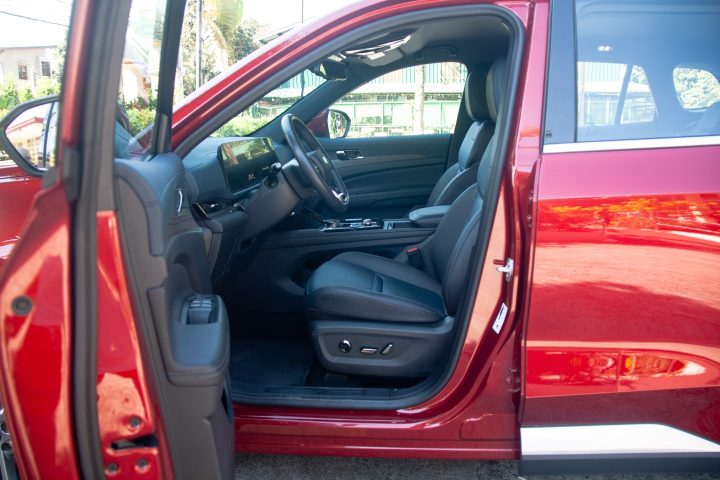
For the Titanium variant of the Territory, blue and black upholstery is the motif of choice, and it’s something Ford calls Perforated Partial Leather. This color combination takes a bit of time to grow on you, especially if the blue clashes against the car’s color – red, in this case – but in the greater scheme of things, it still looks rather classy and elegant. A lot of soft-touch points have also been retained on the dashboard and door cards, so that’s still a plus that’s carried over from the previous generation.
The second row sees a similar pattern on its upholstery, and also like the previous iteration, rear passengers will still find an armrest with cupholders, air conditioning vents, as well as a lone USB port. Take note that it’s not a USB-C port, so that might pose a little bit of a problem with those whose devices make use of the newer plugs. Nonetheless, it’s still a welcome amenity.
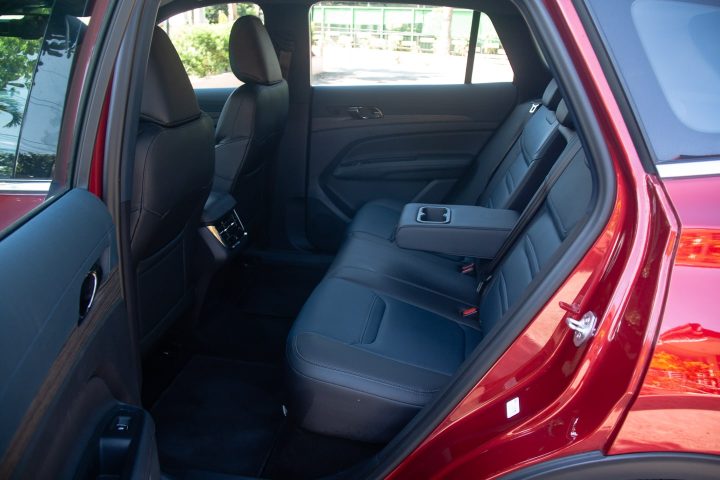
The seats of the Territory, both the old and current models, are very comfortable. I can say that the designers of its interior(s) found a great shape for the front seats in that they hold the passenger and driver quite snugly. There’s very good padding and bolstering in both the front and the rear, and should you find yourself stuck in traffic – which happens to me a lot – you won’t have problems with an aching back.
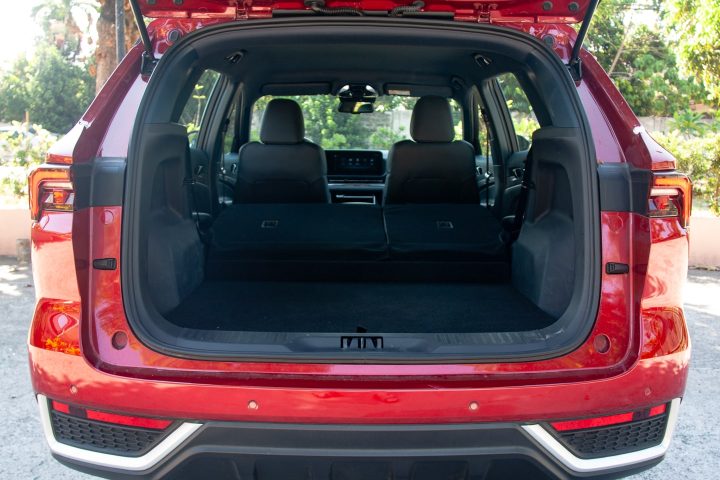
As far as space goes, the Territory Titanium has a lot of it. Whether in front, the second row, or for cargo, you’ll find that head-, leg-, and shoulder-room are much more than decent, and should you need more space for cargo, the rear seatback fold; not full-flat, but enough to allow you to store longer objects into the rear compartment. Space is not something the Territory lacks, and as a crossover, this is always a nice thing to be able to check on the list.
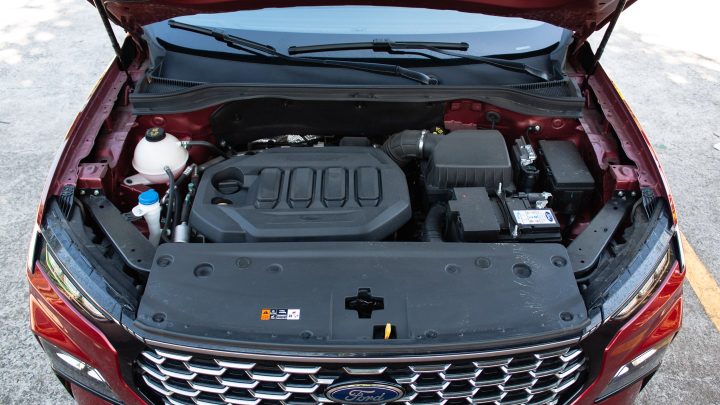
Under the hood of the Territory sits a 1.5-liter EcoBoost GTDI I-4 engine mated to a 7-speed automatic transmission. Yes, it’s still a turbocharged mill that makes about 160 HP and 248 Nm of torque which kicks in at just 1,500 rpm. Now, that’s a pretty good starting point for pull, but one must note that this generation of the Territory is heavy, much heavier than the last. It takes a lot more to get it rolling from a full stop, but once you’re in motion, the torque feels smooth as you work up the revs.
As far as performance goes, it’s not quick, but it can go fast. Power peaks between 5,400 and 5,700 RPM and once you run out of pull, it picks up pretty well. Now we mentioned that the Territory is heavier, and stopping takes more brake input. The brakes are good, they do have enough bite, but you’ll just have to put more into the pedal when you want to stop.
As a crossover, you shouldn’t expect the Territory to take corners quickly or sharply, but overall, it does feel very well-planted, better than the older generation. The suspension is also decent. We say “decent” because depending on how many you are inside, the ride quality will lean towards being wallowy or bouncy. Normally the ride would even out, but there seems to be something with the Territory’s suspension that doesn’t hit the balance exactly. It’s not a jarring ride or a dizzying one either, but a little more fine-tuning would do it a whole lot better.
All these details mentioned, we now come to the sticking point, the Waterloo of both generations of the Territory, and that’s with its fuel consumption. Try as we might, we only clocked a best of 8.2 kilometers per liter. With no attempts of hypermiling involved, we just can’t get it to sip rather than chug. 8.2 is already our best, but in standstill traffic, that dipped to a paltry 7.2 kilometers per liter. As good as the engine’s overall performance is, this is something that would-be buyers will need to consider, especially with traffic getting worse.
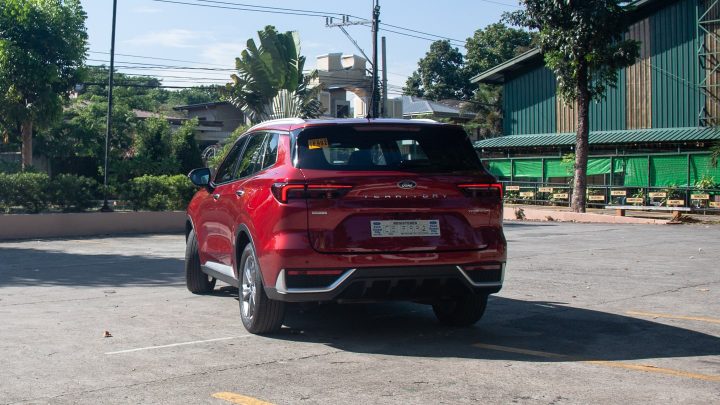
Priced at PHP 1,335,000USD 22,668INR 1,929,476EUR 21,827CNY 165,540, this Territory Titanium isn’t far from the Titanium of old. However, despite its badge, it’s no longer the top of the line variant; that’s now the Titanium X. There are some differences like the exclusion of a moonroof, this having 18″ alloys compared to the X’s 19″, a manual tailgate compared to a hands-free assembly for the X, seat ventilators, and a bigger 12″ gauge cluster. But really, these are all just details that add more oomph but take nothing away from functionality and practicality.
The Territory Titanium still comes with a good number of safety features – but admittedly, the X does come with the entire suite – but as far as essentials go, it’s still enough to keep you safe. Given the Territory’s impressive C-NCAP Safety Rating, you know you’re in a safe vehicle, and whatever’s missing is just added icing on the cake.
For its price, we say that there is good value in the 2023 Ford Territory Titanium. It hasn’t gone on to sell in droves since its release for no good reason, and it’s something that we saw and felt in the course of this review. As a brand, Ford has been doing well, maybe better than they have in the past. As a model, the Territory will always have a following because of its value for money and its standard equipment. Outside of what we’ve written here, we can’t fault the Territory for anything more.
The only question now is if you’re good with what it offers, or if you’d want to up your budget for more safety goodies and a bigger gauge cluster.
More photos of the 2024 Ford Territory Titanium
